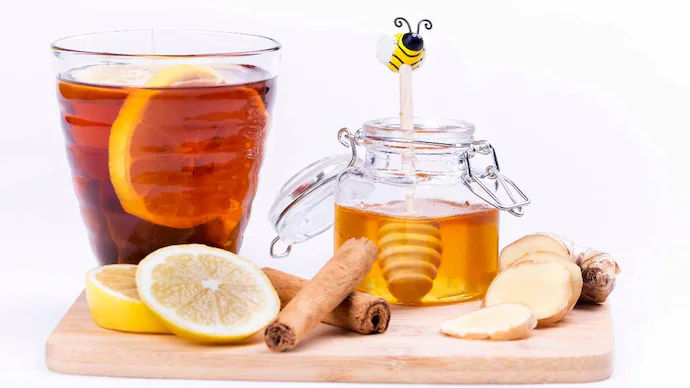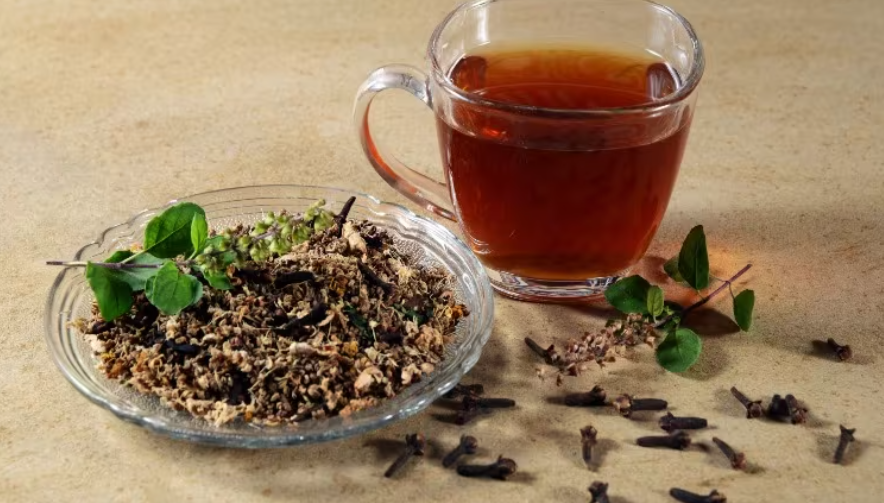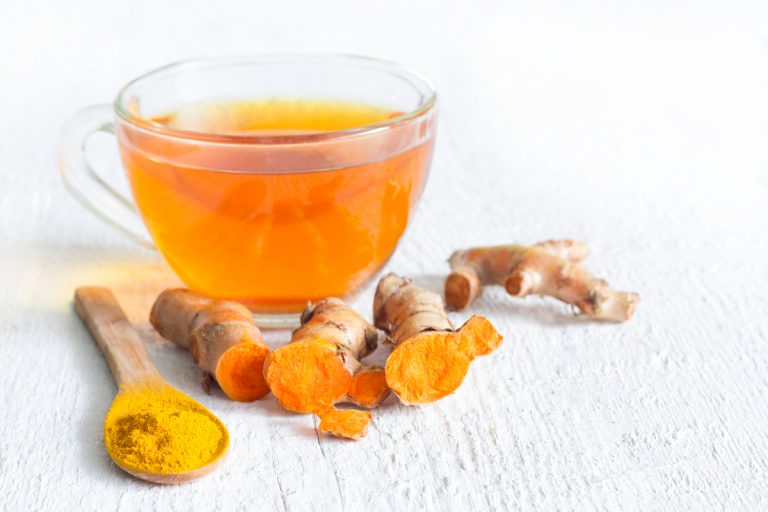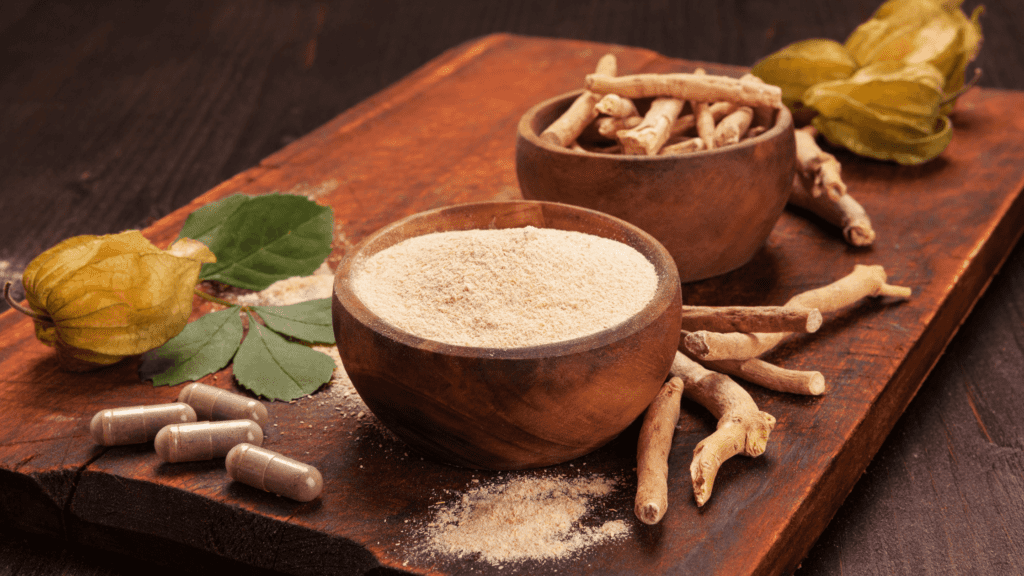The COVID-19 pandemic has made us realize the importance of a strong immune system. There is no magic pill to boost immunity, but natural home remedies like kadha and other Indian nuskhas can help improve our body’s ability to fight infection. In this article, we will look at the benefits of kadhi and other Indian nuskhs and how you can use them to boost your immune system.
Kadha, a blend of herbs and spices, has been a popular home remedy in India for centuries. It is believed to have antiviral, antibacterial, and anti-inflammatory properties that help fight infections. Ingredients like ginger, turmeric, cinnamon, black pepper, and cloves are included in Kadha. It is a concoction of herbs and spices that are boiled in water to make a potent drink that can help improve overall health and boost immunity.


Table of Contents
Kadha Culture: Embracing the Ancient Art of Herbal Healing
There are different types of kadha, each with its unique combination of ingredients and health benefits. In this article, we will explore some of the most common types and their benefits.
Ginger-Lemon Kadha
Ginger-lemon kadha is a popular home remedy for colds and coughs. It contains ginger, lemon, honey, and a pinch of turmeric. Ginger has anti-inflammatory properties and can help in reducing inflammation in the body.
Lemon is rich in Vitamin C, which is essential for a strong immune system. Honey has antibacterial properties and can help in fighting infections.
Ingredients:
- 1-inch piece of fresh ginger
- 1 lemon
- 2 cups water
- 1-2 tablespoons honey (optional)
- 1/4 teaspoon turmeric (optional)
Instructions:
- Wash the ginger and slice it thinly.
- Boil 2 cups of water in a saucepan and add the ginger slices.
- Reduce the heat and let the ginger simmer for 10-15 minutes.
- Cut the lemon into slices and add it to the saucepan.
- Let the mixture simmer for another 5-10 minutes.
- Strain the kadha and add honey and turmeric (if using) to taste.
- Drink it warm.


Tulsi Kadha
Tulsi, also known as holy basil, is a sacred plant in India and has been used in Ayurvedic medicine for centuries. It is made by boiling fresh tulsi leaves in water. You can also add ginger and honey to enhance their taste.
It is believed to have antiviral, antibacterial, and anti-inflammatory properties that can help in boosting immunity. It can be consumed daily, preferably in the morning on an empty stomach or before bedtime.
To make Tulsi Kadha, you will need the following ingredients:
- 10-12 fresh Tulsi leaves
- 1-inch piece of ginger
- 2-3 black peppercorns
- 2-3 cloves
- 1 cinnamon stick
- 1 tablespoon honey (optional)
- 2 cups water
Here’s how to prepare Tulsi Kadha:
- Wash the Tulsi leaves and ginger and chop them finely.
- In a pan, add water and all the ingredients except honey.
- Bring the mixture to a boil and then let it simmer for 10-15 minutes.
- Strain the mixture and add honey if desired.
- Serve hot.


Cinnamon-Black Pepper Kadha
Cinnamon-black pepper kadha is an excellent remedy for digestion and respiratory problems. It contains cinnamon, black pepper, ginger, and honey. Cinnamon has antiviral and antibacterial properties and can help in fighting infections. Black pepper contains a compound called piperine, which has immune-boosting properties.
Here’s how to make Cinnamon-Black Pepper Kadha:
Ingredients:
- 1 cinnamon stick
- 1 teaspoon black pepper
- 1 teaspoon grated ginger
- 1 teaspoon honey
- 2 cups water
- Instructions:
- In a saucepan, add the cinnamon stick, black pepper, grated ginger, and water.
- Bring the mixture to a boil over medium-high heat.
- Reduce the heat to low and let the kadha simmer for 10-15 minutes.
- Turn off the heat and strain the kadha through a fine-mesh sieve.
- Add honey to taste and stir well.
- Serve hot and enjoy the spicy and warming flavor.


Turmeric Kadha
Turmeric kadha is an excellent remedy for inflammation and pain. It contains turmeric, ginger, honey, and black pepper. Turmeric contains curcumin, which has antioxidant and anti-inflammatory properties. Ginger has anti-inflammatory properties and can help in reducing inflammation in the body. Black pepper contains a compound called piperine, which can help in increasing the absorption of curcumin.
To make turmeric kadha, you will need the following ingredients:
- 1 cup water
- 1 tsp grated fresh turmeric or turmeric powder
- 1 tsp grated fresh ginger or ginger powder
- 1 cinnamon stick
- 2-3 black peppercorns
- 1 tsp honey (optional)
- Lemon juice (optional)
Here’s how to make turmeric kadha:
- In a saucepan, add water and bring it to a boil.
- Add grated turmeric, grated ginger, cinnamon stick, and black peppercorns to the water.
- Lower the heat and let it simmer for about 10 minutes.
- Strain the mixture through a fine-mesh sieve.
- Add honey and lemon juice, if desired, and stir well.
- Serve hot and enjoy!


Ashwagandha Kadha
The root of the ashwagandha plant is used along with other herbs and spices to make a traditional Ayurvedic herbal tea known as ashwagandha kadha. It is believed to have many health benefits, such as boosting the immune system, reducing stress and anxiety, improving memory and concentration, and improving overall well-being.
To make ashwagandha kadha, you will need:
- Ashwagandha root powder (1 teaspoon)
- Water (2 cups)
- Honey (1 teaspoon)
- Cinnamon (1/2 teaspoon)
- Cardamom (1/2 teaspoon)
- Ginger (1/2 teaspoon)
- Black pepper (1/4 teaspoon)
Here are the steps to prepare ashwagandha kadha:
- Add the ashwagandha root powder to a saucepan with 2 cups of water.
- Add the cinnamon, cardamom, ginger, and black pepper to the saucepan.
- Bring the mixture to a boil, then reduce the heat and let it simmer for 10-15 minutes.
- Strain the kadha into a cup using a fine mesh strainer or cheesecloth.
- Add honey to taste, and stir well.
- Enjoy your warm and soothing ashwagandha kadha!


Triphala Kadha
Triphala is a combination of three fruits, namely amla, haritaki, and bibhitaki. Triphala Kadha is thought to be beneficial for the body’s detoxification process as well as digestion, immunity, weight loss, and inflammation reduction. It may also help lower blood sugar and cholesterol levels and is thought to have anti-cancer properties.
To prepare Triphala kadha, combine equal parts of Haritaki, Bibhitaki, and Amalaki in a pan, add water, and boil the mixture until it shrinks to about half its original volume to make Triphala Kadha. After straining the resulting liquid, you can sweeten it with honey or jaggery. Triphala Kadha is generally regarded as safe, but it may interact with other medications or cause negative side effects in some people. Before incorporating any herbal remedies into your diet, it is always advised to speak with a licensed Ayurvedic practitioner.
Here’s a recipe for Triphala Kadha:
Ingredients:
- 1 tablespoon Triphala powder
- 4 cups of water
- 1 inch of fresh ginger, grated
- 2-3 cloves
- 1 cinnamon stick
- Honey (optional)
Instructions:
- In a saucepan, bring 4 cups of water to a boil.
- Add 1 tablespoon of Triphala powder to the water and stir well.
- Add grated ginger, cloves, and a cinnamon stick to the saucepan and let the mixture simmer for 10-15 minutes.
- After simmering, strain the mixture using a sieve or cheesecloth.
- If desired, add honey to taste.
- Serve the Triphala Kadha hot or warm.


From Ayurvedic Roots to Modern-Day Wellness Trend
Kadha, also known as herbal tea or decoction, is a traditional Indian beverage made by brewing herbs, spices, and other ingredients in water. The origins of kadhi can be traced back to ancient Ayurvedic texts that describe the medicinal use of various herbs and spices.
Ayurveda is a system of traditional medicine that originated in India 5,000 years ago. It is based on the belief that health and well-being depend on a delicate balance between mind, body, and spirit.
Ayurvedic doctors use a holistic approach to treatment that includes diet, lifestyle, and herbal remedies to treat a variety of ailments. Decoction has been used in Ayurvedic medicine for centuries as a natural remedy for colds, coughs, and other respiratory ailments. Mix herbs and spices such as ginger, turmeric, black pepper, cinnamon, and cloves in water and bring to a boil. Sometimes honey or lemon is added to enhance the taste and add health benefits.
In recent years, decoction has become increasingly popular as a natural way to boost immunity and fight infections. It is often recommended as a home remedy for colds, flu, and other respiratory infections, and as a general tonic to help maintain overall well-being.
Immunity-Boosting Benefits of Indian Herbal Tea
Here are some of the potential benefits of kadha:
Immune booster: The herbs and spices used are well known for their ability to enhance the immune system. Regularly consuming it may boost your immunity and shield you from infections.
Relieves cold and flu symptoms: Kadha is frequently used as a natural treatment for cold and flu symptoms like coughing, sore throats, and congestion. These symptoms may be lessened by the kadha’s ingredients’ anti-inflammatory and antimicrobial properties.
Enhances digestion: Ginger, one of the main components of kadha, is well known for improving digestion and reducing bloating and gas. Kadha consumption after meals may enhance digestion.
Reduces inflammation: The anti-inflammatory properties of many ingredients in kadha, including ginger, turmeric, and cinnamon, are well known. Regularly consuming kadha may help your body experience less inflammation.
Promotes relaxation: Kadha is often consumed before bedtime as it may help promote relaxation and improve sleep quality. The soothing properties of the herbs and spices in kadha may help calm your mind and body.
Is the Bitter Taste Worth the Risks?
Some of the disadvantages of kadha are:
Bitter taste: Kadha has a potent, bitter flavor that many people find intolerable. Some people, especially kids, may find it challenging to consume regularly as a result.
Digestive issues: After consuming kadha, some people may experience digestive problems like bloating, gas, or diarrhea. This might be a result of some of the herbs and spices used having potent medicinal properties.
Risk of allergic reactions: Allergic reactions could occur in some people when consuming certain herbs and spices used in kadha. Avoid consuming it if you have a history of allergies or if you are allergic to any of the ingredients.
Medication interactions: Some of the herbs and spices used in kadha may affect blood thinners and diabetes medications, among other prescription drugs. Before consuming it, if you are taking any medications, you should talk to your doctor.
Risk of toxicity: Licorice root, one of the herbs used in kadha, can be toxic if consumed in large doses. Low potassium levels, high blood pressure, and other health problems could result from this.
| Name | Ingredients | Benefits |
|---|---|---|
| Tulsi Kadha | Tulsi leaves, ginger, honey | Boosts immunity, and relieves cold, cough, and fever |
| Jeera Kadha | Jeera (cumin) seeds, water, honey | Good for digestion, relieves bloating and gas |
| Adrak and Haldi Kadha | Ginger, turmeric, lemon, honey | Great for sore throat, cough, and cold |
| Lemon Ginger Kadha | Lemon juice, ginger, honey | Boosts digestion, relieves nausea and improves skin health |
| Ajwain Kadha | Ajwain seeds, water, honey | Great for indigestion, bloating, and gas, and improves respiratory health |
| Brahmi Kadha | Brahmi leaves, honey, lemon | Enhances memory and brain functions, reduces anxiety and stress |
Conclusion
Kadha or herbal drink is a blend of herbs and spices, boiled in water to make a potent drink that can help improve overall health and boost immunity. We explore the benefits of kadha of ginger-lemon, tulsi, cinnamon-black pepper, turmeric, ashwagandha, and Triphala, each with its unique combination of ingredients and health benefits. The article also discusses the origins of kadha in Ayurvedic medicine and its modern-day wellness trend. Before incorporating any herbal remedies into your diet, it is always advised to speak with a licensed Ayurvedic practitioner.
FAQ’s
What is Kadha drink made of?
Kadha is an Ayurvedic drink made from a combination of herbs and spices that are boiled in water to extract their medicinal properties. The specific ingredients can vary, but some common ones include ginger, turmeric, black pepper, cinnamon, cardamom, and cloves.
What is the benefit of Indian Kadha?
Indian Kadha is believed to have several health benefits, including boosting immunity, improving digestion, reducing inflammation, relieving cough and cold symptoms, and promoting overall wellness.
Which Kadha is best for cough?
When it comes to cough, the best Kadha would be one that contains herbs and spices with natural cough-relieving properties such as ginger, honey, tulsi (holy basil), black pepper, turmeric, and cinnamon.
What are the disadvantages of kadha?
While kadha is generally considered safe and beneficial for most people, there are some potential disadvantages to consider. For example, some people may be allergic to certain herbs or spices. Additionally, consuming too much can lead to dehydration or stomach upset.
Is kadha good for the lungs?
Kadha can be good for the lungs due to its anti-inflammatory properties and ability to improve respiratory function. However, it is always best to consult with a healthcare professional before consuming any herbal remedies.
Which is the best digestive kadha?
There are several different types of digestive kadha, but some common ingredients include fennel seeds, coriander seeds, cumin seeds, ginger, and peppermint. It is best to choose which contaiins ingredients that are known to improve digestion and relieve symptoms such as bloating, gas, and indigestion.


